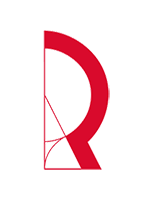No products in the cart.
Burma. The art of Sawangwongse Yawnghwe between Burma and Europe
21 September – 3 November 2024
| Opening hours: | from Tuesday to Sunday 10 am to 6 pm |
Admission ticket: | Admission ticket: 5 euro Discount ticket (3 euro) for: • Artsupp Card holders • Complesso Museale e Archeologico della Cattedrale di Lucca ticket holders • groups of more than 15 • visitors under 18 years • college students, students enrolled in art schools and conservatories with school ID • members of the military with military ID. Admission free for: • children under 6 years • visitors with disabilities (as well as those accompanying them) • one person accompanying per group • Tuscan university students with university ID • school groups (elementary, middle, and high school) • teachers • ICOM members • reporters and tourist-guides with professional ID. |
| Info: | info@fondazioneragghianti.it T. 0583 467205 |
Burma. The art of Sawangwongse Yawnghwe between Burma and Europe
The Fondazione Ragghianti, with the support of the Fondazione Cassa di Risparmio di Lucca and the partnership of the Kunsthistorisches Institut in Florenz, presents Burma. The art of Sawangwongse Yawnghwe between Burma and Europe, an exhibition dedicated to the works of the Burmese artist Sawangwongse Yawnghwe (Sawang). Curated by Max Seidel and Serena Calamai, it consists of a selection of more than sixty works paintings and drawings by the artist dedicated to the bitter and interminable conflict between tyranny and democracy that has affected Burma for over half a century. Rather than limiting himself to the simple account of the tragedies that characterize the country’s recent history, since his first works Sawang has represented the disasters of war through symbolic images, taking inspiration from Goya.
The biography of the artist, born in the area controlled by the rebels in the Burmese state of Shan, is intertwined with the dramas contained in his works. His grandfather was the first president of Burma after the end of English colonialism, and was killed in a military coup. Following the attack, his father and grandmother founded a resistance movement. Sawang has spent his entire life in political exile, from Thailand to Canada to the Netherlands, where he currently lives.
The art of Sawang, active on the international scene, therefore becomes a witness to the suffering of oppressed peoples, and this exhibition collects some examples of extraordinary power, in which the author manages to shape the profound historical essence of the Burmese drama in figurative language: on the one hand the peaceful battle of the Buddhist monks, who protest against the dictatorship only by raising their hands in prayer, and on the other the violence of the military junta.
In addition to the artist’s works inspired by the political history of his country of origin, the exhibition dedicates a space to a cycle of works in which Sawang reflects on important themes of modern European painting, confronting the cultural tradition of our continent from a spatially distant but intensely felt, which adds intensity to his work. In fact, a part of the exhibition hosts a selection of works that explore the transition from figuration to abstractionism, drawing inspiration from Le Chef-d’œuvre inconnu by Honoré de Balzac, which, recounting the impossible search for the absolute masterpiece, analyzes the relationship between representation and reality. Finally, the exhibition includes some works that reflect the great conflict between art and life, which was described by Émile Zola in L’Œuvre in 1886.
Lucca, a city-symbol of a centuries-old struggle for its freedom, appears to be an ideal place to host this exhibition, which confirms a continuous commitment to promoting artists and themes worthy of further study, offering the public a stimulating and significant cultural experience.
Burma. The disasters of war
Starting from his graphic works, Sawangwongse Yawnghwe has chosen to represent, inspired by Francisco Goya’s engravings, the disasters of the war in Burma with a figurative language that favors a symbolic iconography to the detriment of a mere chronicler narration. With his powerful evocative language, the artist vividly bears witness to the afflictions of a people fighting against oppression and military tyranny. Sawang’s paintings, thanks to their political relevance, acquire a universal historical dimension in giving artistic form to the essence of some historical events such as the Saffron Revolution of 2007, during which Buddhist monks peacefully protested against the dictatorship by raising their hands in prayer. The complex political situation in Burma, and its connection with international finance and drug traffic, are represented in the painting Parallax of the interplay of contrasting forces. In the perspective of the current historical situation and of the long conflict between democracy and tyranny, which has afflicted Burma for more than half a century, emerges the extraordinary personality of the Nobel Peace Prize winner Aung San Suu Kyi, depicted – in contrast with the vision of General Min Aung Hlaing, who worships the demons of tyranny – humbly kneeling while performing the compassionate gesture of Buddhist prayer. The golden age of Burma is represented with symbolic figures that melancholically allude to a glorious lost past. Two series of paintings are dedicated to the imprisonment of Aung San Suu Kyi and to the long-awaited fall of the general of the military junta who, walking on the edge of madness, will precipitate into the darkness of oblivion. Finally, the artist asks the visitor a question, painted on the azure background of an imposing canvas, in which is depicted the geography of Burma: Which way to land?
Le Chef-d’œuvre inconnu by Honoré de Balzac. The quest of the Absolute Beauty
As an international artist in exile, Sawangwongse Yawnghwe dedicates his paintings not only to denouncing the atrocities of the Burmese drama, but also to creating works inspired by the first great short story of European literature that places the figure of the artist at the center, Le Chef-d’œuvre inconnu, written by Honoré de Balzac in 1831. With his powerful symbolic figuration, Sawang has transcended political iconography to create in Europe a cycle of paintings inspired by the themes of Balzac’s short story, such as the danger of the brilliant artist who, in seeking the absolute of painting, ends up destroying himself and his art. Sawang is the first artist – after Pablo Picasso, who freely interpreted the literary work with a series of graphic works in the Vollard edition of 1931 – to interpret the short story with refined and brilliant intellect, focusing on the theme of the vain search for absolute beauty. Drawing with his clear and vivid graphic style, Sawang has represented the dream of the absolute in the artistic creation of Frenhofer, the protagonist of the short story from La Comédie humaine, until the dissolution of the image and its destruction by the artist of genius. The dissolution of the image of the painted woman is masterfully depicted with the technique of painting on copper, on which the pigment, through slow oxidation, favors the dissolution of the figure in the background, thus going beyond the academic dichotomy between drawing and colour. Overcoming the dialectic between reality and mimesis, the artist is inspired in an antithetical sense, in the attempt to give life to the work of art, by the famous myth of Pygmalion: the creation seems to come to life, disturbing the model who observes in dismay the dissolution of the obsessive work of the artist.
L’Œuvre by Émile Zola. The conflict between Art and Life
In 1886, Émile Zola published L’Œuvre, the second great work in French literature, after Balzac’s Le Chef-d’œuvre inconnu, which places at the center of the story the tragic life of a brilliant painter, that strongly shocked the sensibilities of Cézanne, Rilke and many intellectuals of the time. The idea of an artist’s novel was born from Zola’s activity as fervent art critic, a defender of the nouvelle peinture of Manet and Cézanne. L’Œuvre describes the ardent temperament of the painter Claude Lantier, consumed by the feverish search for a new art that goes beyond the aesthetics of Impressionism. Sawangwongse Yawnghwe, the first painter to have interpreted Zola’s novel, created a cycle of paintings that represent the obsessive concentration of the painter Claude on the woman in the painting, who totalizes his artistic imagination, isolating him more and more from the affection of his model and wife Christine. The conflict between Art and Life, which will eventually lead to the opposition between the beauté géante of the painting and Christine, emerges in the first painting of the series, which represents the model on the lush banks of a river in the Parisian countryside, abandoned by the young artist who flees to Paris to work on his first masterpiece. The strenuous search for the new painting leads Claude to work feverishly in a dark atelier, where he desperately tries to increasingly enhance the beauty of the giant woman in an artwork that he will leave as an unfinished masterpiece, hanging himself in front of it. Sawang depicted this final scene of the novel, interpreting it as a spiritual union of the artist with the beauté géante, illuminated by a luminous light that alludes to the fullness of a mystical vision of art.
Sawang
Sawangwongse Yawnghwe is descended from the Yawnghwe royal family of Shan State, where he was born in 1971. As an artist in exile, devoted to exposing the atrocities of Burmese drama, Sawang is represented by major galleries in Taiwan, with exhibitions in New York, Jerusalem, Berlin and the Netherlands. His grandfather, Sao Shwe Thaik, was the first President of Burma from 1948 to 1962, after that the country gained independence from Great Britain in 1948. Shwe Thaik died in prison afterwards the 1962 military coup by General Ne Win; since then, Yawnghwe’s family was forced into exile. Sawang and his family fled to Thailand and later to Canada, where Sawang grew up and studied at the Academy of Fine Arts. Sawang moved to Europe in the mid-1990s, moving assiduously between Italy, India and Thailand, before settling in Berlin in 2009. Back in Italy, he began to think about the idea of placing the history of the Shan and his family’s past at the center of his work, combining this theme with the interpretation of the great French novels. Since several decades he lives with his wife Kris Berendsen and their three children in the Netherlands, where he works and founded in 2015 the Yawnghwe Office in Exile.
Fondazione Centro Studi sull’Arte Licia e Carlo Ludovico Ragghianti – ETS
Via San Micheletto 3, Lucca

